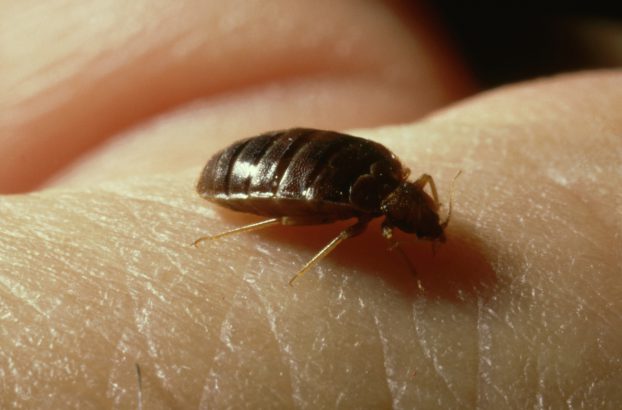The bed bug was almost extinct after WWII. Still, it has been back for some time due to increased tourist and commercial transport, resistance to certain insecticides, and a lack of knowledge of eradicating it. The signs of its presence do not deceive (bites after remaining motionless for hours or small traces of blood on the sheets). We can then ask ourselves the lifespan of the bed bug and its life cycle, how it can lay eggs, how its meals occur, and where it lives.
The bed bug lifespan
The average bed bug life expectancy ranges from 10 to 12 months. But she can live up to 24 months, regularly feeding on human blood. Without food, it can survive 12-18 months in a dormant state. The bed bug is, therefore, a very resistant insect!
In addition, the female can lay between 2 and 8 eggs per day. It can therefore produce nearly 500 eggs in its lifetime. The infestation can thus quickly become significant, and the intervention of a professional will be necessary. Besides, the temperature of the infested house plays a crucial role in the development and longevity of the bed bug. Thus at 18 ° C, it can take three months to become adult and mature. But at over 25 ° C, it will only take three weeks.
The summer period, therefore, favors its reproduction. In the past, the bed bug hibernated during the winter, but using heating now allows it to remain present in all seasons. However, the infestation is always less important in winter. You should know that its ideal temperature of life is thus between 21 ° C and 28 ° C.
The life cycle of the bed bug
Bed bugs only move at night to feed and often colonize the undersides of mattresses and box springs. If it is not detected in time, it will multiply provided the temperature is favorable (she does not actually like extreme temperatures). The female then lays eggs 1 mm long and whitish (with a granular appearance), deposited in a crevice or on a cluster crack (they stick to it very easily thanks to a sticky coating that surrounds them). These eggs hatch after a week or two and develop into nymphs (larvae).
The pupa looks a lot like the adult bed bug but with a yellowish tinge, and it is much smaller (1.5-4.5mm long depending on its stage of growth). Therefore, the larva is first a nymph and then becomes an adult after 4 to 5 weeks (and five molts) under good living conditions. She has to have food, or else she cannot survive, and if it is below 13 ° C, she cannot thrive.
Once an adult, the bed bug measures between 4 and 7 mm (the size of an apple seed), and its color are darker (reddish-brown). If it is between 21 ° C and 28 ° C, a favorable temperature for reproduction, the female can lay up to 15 eggs per day (the average being, as a reminder, from 2 to 8) with a laying delay. It is ranging from 3 to 7 days.
How can bed bugs lay eggs?
The female bed bug must mate with a male to lay eggs. But they both have to feed on blood first, so that sperm production occurs in the male and the eggs can mature in the female. And be aware that the female bed bug is infertile just after the cold period of the year, forcing it to feed to reproduce again.
Unlike other animals that use their genital tract to reproduce, the male bed bug will not inseminate the female through her genital opening but will pierce her abdomen. He thus directly injects his sperm into the female in a pocket called Ribag's organ. From this pocket, the sperm will join the ovaries of the female. It should be noted that the injuries that this mating causes to the female reduce her lifespan by about 30%. And she will mate about five times in her life while the male will mate with several females several times a day.
Some details on bed bug meals
It is known that the bed bug feeds on blood. But it should be noted that the time between two meals is variable, the average being 3 to 15 days. Let's not forget that bed punishment can survive without food for over a year and a half under optimal conditions. After each meal, the bed bug digests for 4 to 6 days. A meal lasts between 10 to 20 minutes. The bed bug can thus bite its victim more than 90 times in a night. It absorbs about 4 to 5 times its body weight during a meal. Its droppings are black, measuring 1 to 3 mm, and very strongly impregnating the tissues.
Some details on the places where bed bugs live
The bed bug is very attracted to the heat that humans give off. But she will not stay on her host until the time of the bite is just a few minutes. She will then hide in a sheltered and dark place. She prefers surfaces made of wood, fabric, and paper near areas where humans go to sleep. Nearly 35% of bed bugs hide in box springs; 23% in chairs and sofas; 22% in mattresses; 13% in headboards and structures, and 7% elsewhere (wallpapers and walls, walk-in closets and wardrobes, baseboards, clothes, etc.).

